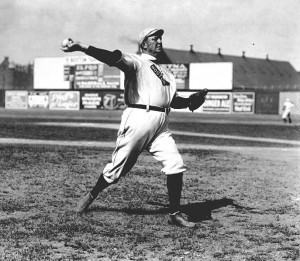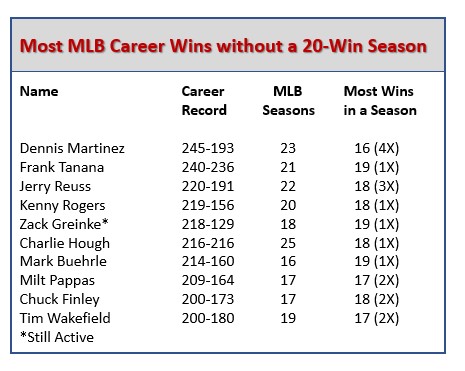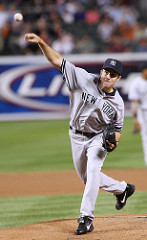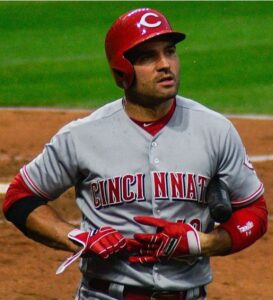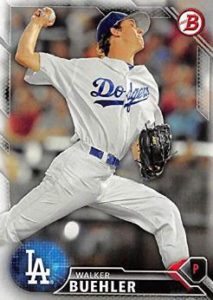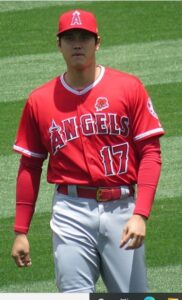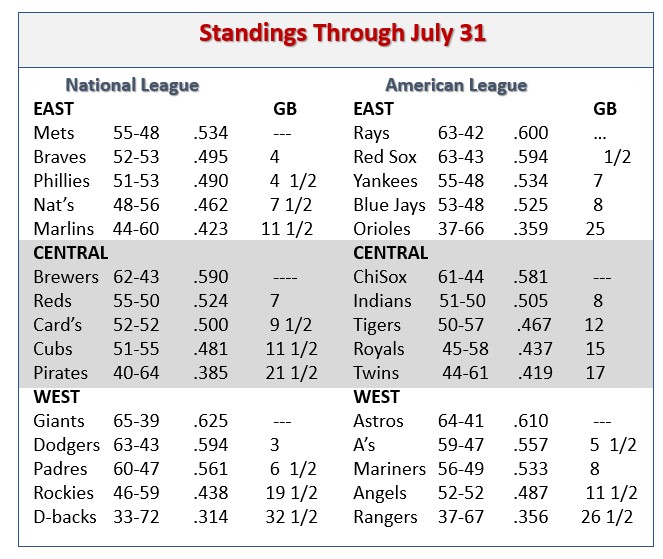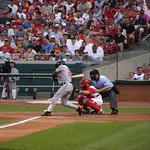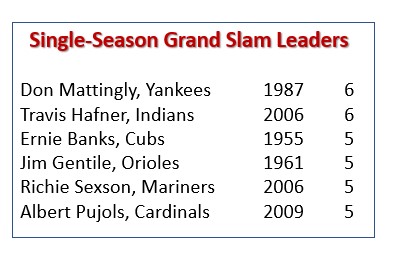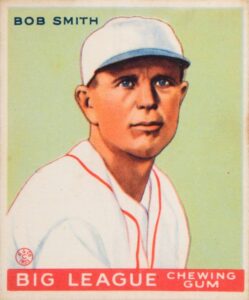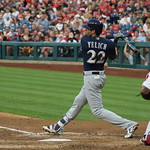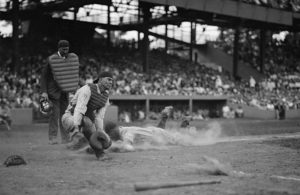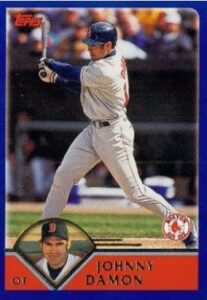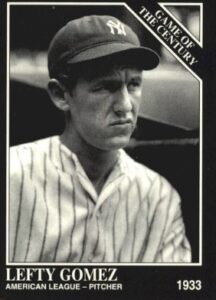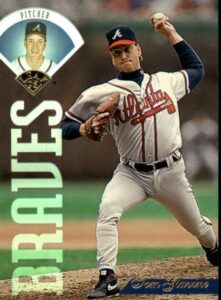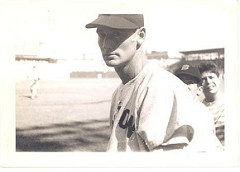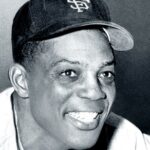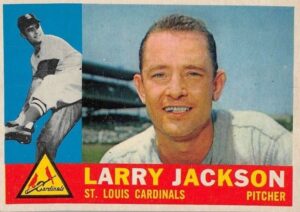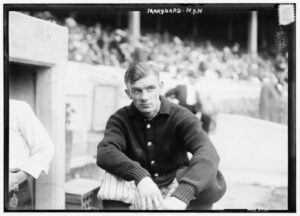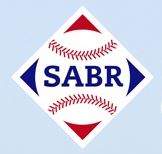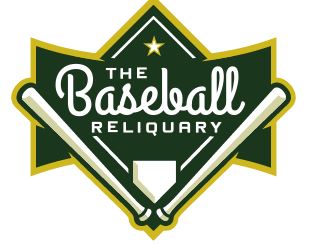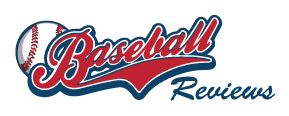In this blog, I’ve often written about how, when I start delving into a hardball topic, “one thing leads to another.” The main topic of this post was to be “Pitchers with the Most Career Wins Without a Twenty-Victory Season.” Well, as usual, on thing led to another, so I thought I’d give you a brief look at how I get pulled down the statistical rabbit hole.
Once I started looking into pitchers with the most wins without a twenty-win season, I was drawn into the topic of the pitchers with the most twenty-seasons. On that front, I came up with the list below.
Now, I always try to verify stats and info I use in Baseball Roundtable from multiple sources. And, that’s where I found an intriguing rabbit hole. At the top of the list is Cy Young, with 15 seasons of twenty or more victories. However, I found some disagreement on that figure. While MLB.com, Baseball-Almanac.com, the Society for American Baseball Research (Cy Young by Bill Nowlin and David Southwick) and my most recent print version of The ESPN Baseball Encyclopedia all credit Young with 15 seasons of twenty or more wins, Baseball-Reference.com, the Baseball Hall of Fame’s Cy Young page and the 2021 Edition of the Elias Book of Baseball Records credit Young with 16 such seasons. That, of course, threw me off a bit – especially since the sources all agreed on Young’s 511 career wins. So, deeper in the rabbit hole I went. It turns out, those sources citing 15 seasons of 20 or more wins, credit Young with going 19-19 for the 1900 Cardinals, while those reporting 16 such seasons reported Young’s 1900 record as 20-18. That still didn’t explain how they all came to a total of 511 career wins. So, deeper I went. It turns out that 15-season cadre reported Young’s 1893 record at 34-16, while the 16-season cadre list Young’s 1893 won-lost total as 33-16. Notably, if you check out Baseball-Reference.com, you will see Cy Young’s career record at 511-315, while MLB.com list 511-316. Tough call on what to use in my chart, but (as a SABR member) I leaned toward the 15-season record. Now, I have some more digging to do to see if I can resolve the discrepancies. Fortunately, whichever measure you use, Young still holds the record for most twenty-win seasons.
Now, let’s get on with a look at the 20-win season leaders – and then the pitchers with the most career wins without a 20-win season.
Note: When listing a pitcher’s age, it is their age as of June 30th of the season referenced.
Cy Young – 15 (maybe 16) Seasons of 20 or more Wins
Cy Young notched 511 wins and 315 losses (both MLB career records) in 22 MLB seasons (1890-1911). Young had his first 20-win season (at age 24) for the NL Cleveland Spiders (27-22, 2.85) and his final twenty-win campaign at age 41 for the 1908 Boston Red Sox (21-11, 1.26). He led is league in wins five times and recorded five seasons of 30 or more wins. Now, it you side with those who report that Young had 16 (as opposed to 15) 20-win seasons, he also ran off a record 14 straight seasons of twenty or more wins. However, if you accept the 15 twenty-win season position, that record goes to the next hurler on this list – Christy Mathewson with 12 consecutive seasons of twenty or more wins.
Seeing the Job Through
Cy Young completed 749 of 815 MLB starts (91.9 percent). He threw forty or more complete games in nine seasons.
Christy Mathewson – 13 seasons of Twenty or More Wins
Christy Mathewson put up a 373-188 record (with a 2.13 ERA) in 17 MLB seasons (1900-1916). His first twenty-win campaign came in his age-20 season – for the New York Giants (20-17). His final twenty-win campaign came in 1914 (age 33) also for the Giants (24-13.). Mathewson had four seasons of 30 or more wins and 12 consecutive seasons of at least twenty victories. From 1903 through 1905, he won at least 30 games in three consecutive seasons – going 94-34, 1.87. In his career, he led the NL in wins four times, ERA five times and strikeouts five times. In the 1905 World Series, Mathewson threw three complete-game shutouts in three starts (over six days), allowing only 14 base runners (13 hits/one walk) in 27 innings.
One Final Tripe to the Mound
Christy Mathewson pitched in a total of 636 MLB games – in all but his final game, he wore a Giants’ uniform. On July 20, 1916, Mathewson (on the downside of his playing career and having voiced a desire to manage) was traded to the Reds, where he replaced Buck Herzog as manager. He did take the mound one time for the Reds (September 4), picking up his final MLB win (a complete game in which he gave up 15 hits and eight runs), as the Reds topped the Cubs 10-8.
Warren Spahn – 13 Season of Twenty or More Wins
Warren Spahn went 363-245, 3.09 in 21 MLB seasons (1942, 1946-1965). He would have put up even more impressive numbers if he hadn’t lost three prime years (1943-45) to military service. His first twenty-win campaign came for the Braves in 1947 (at age 26), when he went 21-10, with a league-low 2.33 ERA. His final twenty-win campaign was also for the Braves – 23-7, 2.60 in 1963 (at age 42.). He was an All Star in 14 seasons. In eight of his 13 20-win season, he won 21 games.
Can’t Touch That
Warren Spahn led his league in wins an MLB record-tying eight times (tied with the Negro Leagues’ Ray Brown) – including five consecutive seasons from 1957 through 1961.
Walter Johnson – 12 Seasons of Twenty or More Wins
Walter Johnson pitched 21 MLB seasons (1907-27) – all for the Washington Senators. His 417 wins (279 losses) included two seasons of 30 or more wins – a high of 36 in 1913, when he led the league in wins, winning percentage (.837), ERA (1.14), complete games (29), shutouts (11) and strikeouts (243). He had his first twenty-win season in 1910 at age 22 (25-17); and his final twenty-win season (20-7) in 1925 (age 37). Johnson led his league in strikeouts a record 12 times, including eight consecutive seasons (1912-19).
King of the Shutout
Walter Johnson’s 110 career-regular season shutouts are an MLB career record, as are his seven Opening Day shutouts and his seven seasons leading the league in shutouts (tied with Grover Cleveland Alexander and Cy Young).
Kid Nichols – Eleven Seasons of Twenty or More Wins
Kid Nichols played 15 MLB seasons (1890-1901, 1904-06), winning twenty or more games in eleven seasons. He won thirty or more games in seven seasons (including four consecutively from 1891 through 1895). In the eight seasons from 1891 through 1898, he averaged 31 wins per campaign. He ultimately racked up a 362-208, 2.96 record. His first twenty-win season (27-19) came at age 20 for the 1890 NL Boston Beaneaters. His final twenty-win season came in 1904 (age 34) for the Saint Louis Cardinals (21-13). Nichols led the NL in wins in three consecutive seasons (1896-98). He also led the league in shutouts four times.
I Got This
In three seasons, Kid Nichols completed every game he started – 47 starts in 1890; 43 in 1895; 37 in 1899. Over his career, he completed 532 of 652 starts (94.7 percent).
_____________________________________________________________________
Staying Power
Don Sutton had the fewest 20-win season of any pitcher with 300 MLB victories, He won twenty games in a season just once (21-10, 3.06 for the 1976 Dodgers) in his 23-season career (1966-88), he won 15 or more games 12 times and ten or more 21 times.
_______________________________________________________________________
—-Most Career Wins Without a Twenty-Win Season—–
Now a look at the pitchers who racked up the most career wins, without ever winning twenty games.
Dennis Martinez – 245 Wins
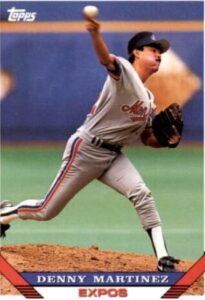 Dennis Martinez pitched in 23 MLB seasons (1976-98.) The four-time All Star, went 245-193, 3.70. He never won more than 16 games in a season, reaching that high mark four times. He did lead the American League in wins in the strike-shortened 1981 seasons (14-5 for the Orioles. He won ten or more games in 15 seasons.
Dennis Martinez pitched in 23 MLB seasons (1976-98.) The four-time All Star, went 245-193, 3.70. He never won more than 16 games in a season, reaching that high mark four times. He did lead the American League in wins in the strike-shortened 1981 seasons (14-5 for the Orioles. He won ten or more games in 15 seasons.
Whew! That was close.
Photo by Keith Allison
Mike Mussina nearly toppled Dennis Martinez from the top of the list for career wins without a twenty-win season. Going into the 2008 season (Mussina’s last), Mussina was 250-144 – without a twenty-win campaign on his resume (he had led the AL with 19 wins in 1995). On September 28 of that season, he took the mound for his last MLB start with a 269-153 career record and a 19-9 record on the season (269 wins, with no twenty-win season). In that final career start, he threw six shutout innings, got the win (his 20th of the season) and disqualified himself from this list.
Frank Tanana – 240 Wins
Frank Tanana started out as a fire-balling (mid-to-high 90’s fastball) workhorse (lots of innings, strikeouts and complete games). In the late 1970’s, that workload took its toll (elbow and shoulder issues) and Tanana transformed himself into a finesse pitcher – with a skill set that kept him in the big leagues until 1993 (21 seasons). Despite that long career, Tanana, Baseball Roundtable believes, tends to be considerably underrated. For example, among southpaws, his 240 MLB wins are the 15th most all time; his 2,773 strikeouts rank fifth among lefties; his 4,188 1/3 innings pitched are seventh; and his 616 games started seventh. His final MLB line was 240-236, 3.66. He won 15 or more games in six seasons; ten or more in 14.
Tanana, a three-time All Star, while never having a twenty-win season did win 19 games once (1976 Angels … 19-10, 2.43). That season, he took four losses in complete games in which he gave up no more than two runs.
He Deserved better
Detractors point to Frank Tanana’s 240-236 won-loss record, but Tanana spent much of his career pitching for teams that didn’t exactly excel at providing him run support. Consider, for example, that from April 29 through July 3, 1977, Tanana threw fourteen consecutive complete games for the Angels. In those contests, he tossed five shutouts, never gave up more than three runs and put up a 1.36 earned run average. This work earned him just nine wins versus five losses.
Jerry Reuss – 220 Wins
Jerry Reuss pitched in 22 MLB seasons (1969-90), going 220-191, 3.64. He was a two-time All Star and won a career-high 18 games in three seasons (and won 15 or more games in five campaigns and ten or more in 12). His best season was 1980, when he went 18-6, 2.51 for the Dodgers, led the NL with six shutouts and finished second in the NL Cy Young Award voting to Steve Carlton. Reuss pitched for eight different MLB teams.
So close!
On June 27, 1989, Jerry Reuss started for the Dodgers against the Giants and Vida Blue in San Francisco. The third batter of the game, Giants’ RF Jack Clark, was safe on an error by Dodgers’ SS Bill Russell. Clark would be the only batter to reach base that day, as Reuss pitched a no-hitter (two strikeouts) and missed a perfect game by that one miscue. The Dodgers, by the way, won 8-0.
Kenny Rogers – 219 Wins- LHP
Kenny Rogers went 219-156, 4.27 in 20 MLB seasons (1989-2008). He won a career-high 18 games (18-9, 4.76) for the 2004 Rangers, making just his second All Star team (at age 39). Rogers won 15 or more games in five seasons and ten or more in fourteen. On July 28, 1994, Rogers threw a perfect game against the Angels (in Texas) – fanning eight. Notably, Rogers started his MLB career as a reliever – appearing in an average of 71.5 games per season from 1989 through 1992. In 1992, the year before the Rangers converted him to a starter (33 starts in 1993), Rogers led the AL in appearances with 81.
Maturing Very Well
Kenny Rogers made his first All Star team in 1995 (his age-30 season) and didn’t make the All Star Squad again until his age-39 season (2004) – when he began of string of three straight All Star selections. From his age-39 through his age 41 season, Rogers went 49-25, 4.04 – the moist productive three-season span in his career.
Zack Greinke – 218 Wins – RHP
Zack Greinke, the only active pitcher on this list, is in his 18th MLB season. His record (as of this writing) is 218-129, 3.38. The six-time All Star, six-time Gold Glover and 2009 AL Cy Young Award winner won a career-high 19 games for the Dodgers in 2015 (when he also led the NL with a 1.66 earned run average). He has won 15 or more games in nine seasons, ten or more in 13.
Almost Dodged this Bullet
In his 19-win 2015 season, Greinke got a no-decision or a loss in eight games in which he pitched at least six innings and gave up no more than one earned run.
Charlie Hough – 216 Wins
Knuckleballer Charlie Hough had to work long (25 seasons … 1970-94) to make this list – at least partly because he spent his first 12 seasons primarily as a reliever (438 games, just 23 starts). He finished his career at 216-216, 3.75, with 61 saves. He was 174-173, 3.82 as a starter and 42-43, 3.45 out of the bullpen. Hough won a career-high 18 games in 1987 (18-13, 3.78) for the Rangers. He won 15 or more games six times and ten or more ten times.
Something Old, Something New
Forty-five-year-old Charlie Charlie Hough started the first regular-season game of the new Marlins’ franchise on April 5, 1993. He went six innings (three earned runs) to earn the team’s first regular season victory and record the Marlins’ first-ever strikeout, fanning Dodgers’ leader off bitter Jose Offerman on three pitches in the top of the first inning.
Mark Buehrle – 214 Wins
Mark Buehrle won 214 games (160 losses) in 16 MLB seasons (2000-15) – winning a career high 19 in 2002 (19-12, 3.58 for the White Sox). He won 15 or more games six times and ten or more in all but his first season (when he made his MLB debut in mid-July). He was a five-time All Star and four-time Gold Glover.
If You’re Not Perfect – Keep Trying
On April 18, 2007, Mark Buehrle pitched a no-hitter (for the White Sox) against the Rangers (in Chicago). He came about as close to perfection as you can get – allowing just one base runner (a walk to Sammy Sosa, whom he promptly picked off first). Thus, he faced the minimum 27 batters in his eight-whiff masterpiece. On July 23, 2009, he did himself one better, tossing a perfect game against the Rays (again for the White Sox, again in Chicago). In that one he fanned six.
Milt Pappas – 209 Wins
Milt Pappas went 209-164, 3.40 in 17 MLB seasons (1957-73). Notably he reached a career-high 17 wins in two of his final three campaigns – both for the Cubs (17-14 in 1971 and 17-7 in 1972). He won 15 or more games in seven seasons and 10 or more in 14. He was an All Star in two seasons.
Another NO-NO one this List
On September 2, 1972, Milt Paper no-hit the Padres (8-0) for the Cubs (in Chicago). He walked one a and fanned six in the game.
Chuck Finley – 200 Wins
Chuck Finley went 200-173, 3.85 in 17 MLB seasons (1986-2002). He won a career-high 18 games in both the 1990 and 1991 seasons – going 18-9 both times. Finley won 15 or more games in seven seasons and ten or more in 12.
I’ll Have One More, Please
Chuck Finley is the only MLB pitcher to have three four-strikeout innings in his career.
Tim Wakefield – 200 Wins
Knuckleballer Tim Wakefield played 19 MLB seasons (1992-93, 1995-2011), going 200-180, 4.41. He won a career-high 17 games in two seasons (1998, 2007). The one-time All Star won 15 or more games in four times and ten or more 11 times. Wakefield reached 200 career wins despite never having a 20-win season and having an ERA under 4.50 in only eight of 19 campaigns. His best season was 1995, when he went 16-8, 2.95 for the Red Sox and finished third in the AL Cy Young Award balloting. He made his first All Star team at age 42, in his 17th season (2009). That season, he was 11-3, 4.31 in the first half – before injury (lower back straing) limited him to just four starts (0-2, 6.00 in the second half).
1992 NLCS
In the 1992 National League Championship series, Wakefield started Games Three and Six for the Pirates (versus the Braves) and pitched a pair of complete-game victories – giving up six runs in 18 innings. The Pirates, however, lost the Series four games-to-three.
Primary Resrouces: Baseball-Reference,com; Baseball-Almanac.com
BASEBALL ROUNDTABLE ON THE TOP 100 BASEBALL BLOG LIST
 Baseball Roundtable is on the Feedspot list of the Top 100 Baseball Blogs. To see the full list, click here.
Baseball Roundtable is on the Feedspot list of the Top 100 Baseball Blogs. To see the full list, click here.
I tweet baseball @DavidBBRT
Follow/Like Baseball Roundtable’s Facebook Page here. More baseball commentary; blog post notifications; PRIZES.
Member: Society for American Baseball Research (SABR); The Baseball Reliquary; The Negro Leagues Baseball Museum.

